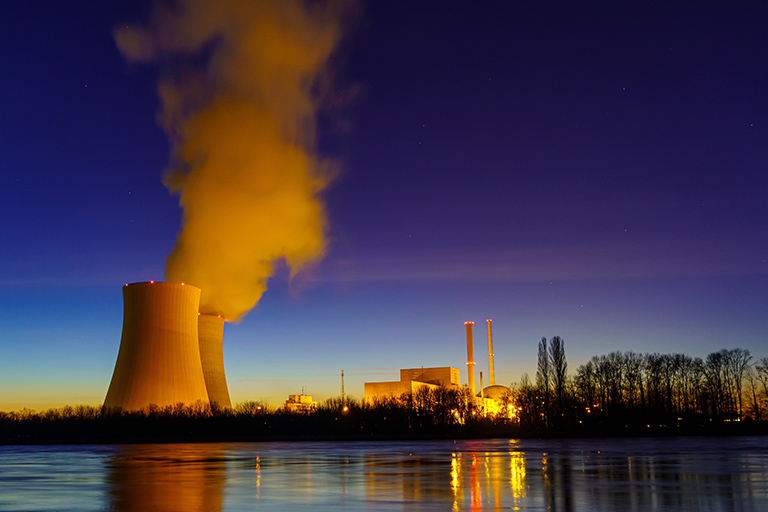
Climate change is recognized by the United Nations as “the most systemic threat to humankind,” but even with global awareness of the problem, the demand for fossil fuels remains high. Meanwhile, the World Health Organization says that air pollution is the world’s largest environmental risk, with an estimated 7 million people dying prematurely from air pollution each year.
The rise of renewable energy sources like wind, solar, and geothermal show that there is a demand for more sustainability in the energy industry; however, these technologies can’t alone supply the nation’s increasing demand for reliable energy.
Advanced nuclear reactors and fusion technology stand to help nuclear energy play a critical role in solving the climate crisis, something that joint faculty Associate Professor Steven Skutnik says will be necessary due to nuclear energy’s low-carbon base load.
“Electricity is only one-fifth of the total carbon emissions right now, so if we’re really talking about deep cuts in carbon emissions we have to think about other sectors,” he said. “It’s a question of how do we go beyond cutting carbon out of the electricity sector and start actually eating into the problem in other sectors. For instance, if we wanted to decarbonized transportation, it means we’re probably going to electrify. In order to do that, we will need a lot more zero carbon power.”
Advanced nuclear reactors, and even fusion reactors, could provide a reliable source of energy to be deployed on a large scale, potentially replacing fossil fuel plants altogether.
“Nuclear energy is the largest and most important low carbon electricity source in the United States,” said Associate Professor Nick Brown. “Advanced nuclear reactors have potential missions far beyond electricity generation, such as process heat for industrial applications or efficient desalination of water. Microreactor concepts could provide remote power for isolated communities such as in northern Alaska, or in forward operating bases for the military.”
Using a life-cycle assessment, the greenhouse gas emissions of every stage of the production of nuclear energy can help identify the overall carbon footprint. Over the course of that life-cycle, nuclear produces about the same amount of carbon dioxide per unit of electricity as wind.
According to new research published in Nature Energy, the full life-cycle greenhouse gas emissions of solar, wind, and nuclear extending to 2050 are significantly lower than fossil fuels. This includes the “carbon debt” of emissions produced in manufacturing, construction, and supply chain processes.
The voluntary emissions reduction of the Paris Agreement was a first step to gain global cooperation to reduce emissions, but stronger global decarbonization measures will be needed to meet critical climate targets.
More than 40 governments around the world have put a high price on carbon, yet it is still not politically expedient to issue a carbon tax or otherwise enact strict regulations that would limit carbon emissions because of fears such measures would hurt the economy.
On February 11, 2020, the highest ever daily average of CO2 in the atmosphere was recorded at the Mauna Loa Observatory at 416.08 ppm. Climate leaders agree that nuclear energy is a key factor in meeting electricity demand, which is increasing about twice as fast as overall energy use and is likely to rise by more than half by 2040.
Nuclear power reduces carbon dioxide emissions by some 2.5 billion tons per year compared to coal-fired generation, demonstrating why it is seen as an essential part of a low carbon future.
Contact
Élan Young: elan@tennessee.edu